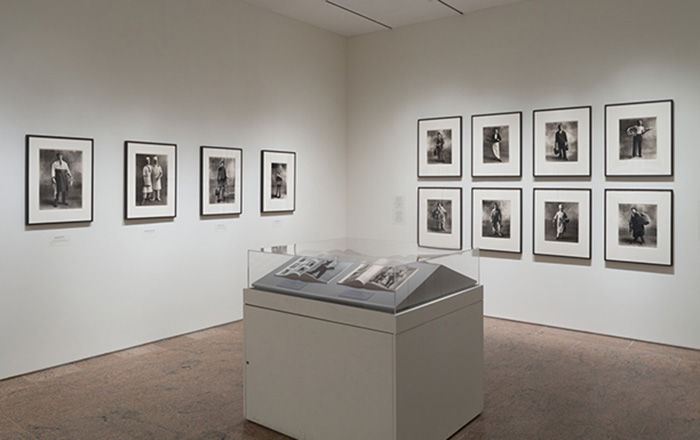[Café, Paris]
Germaine Krull French, born Poland
Not on view
In Paris, Germaine Krull’s camera hovers on thresholds, peering in. Through windows and doorways, city life slips in and out of her focus. By the late 1920s, this approach had won her remarkable success, both commercially and on the avant-garde exhibition circuit. In her work for illustrated magazines, Krull adopted some elements of the so-called New Vision, at times tilting and craning her camera to approximate the dynamism of the modern street. But hers is not just a quick or experimental eye; formal innovation is tempered, in her pictures, by slow and sustained interest—a style of close looking which she described as witnessing. For her, photography was always a means of reporting, and she explained "It is natural that [the true photographer] does not always keep her eye at one-and-a-half meters off the ground. But she must always think of the ground, of the grounding of today, of this morning, of this Thursday morning."
Photographing on the street in 1930, Krull apprehended the inhabitants of a department store window with similar attention. Behind the glass, a family of mannequins is dressed for the beach. The wax population of Paris had grown exponentially in the previous decade, prompting much criticism and recontextualization—for the surrealists and their ilk, pedestrian confrontations with a parade of stiff-lipped doubles proved an irresistibly uncanny modern motif. Most mannequin portraits of the period met their subjects head-on, staring blankly from their enclosures. But here, photographing for a story in the literary magazine Les Annales, Krull animates her subjects from an unlikely angle. Obliquely approaching their natural habitat, she catches them sunbathing. Joining in at eye-level, her camera seems to contribute to their collective delusion.
